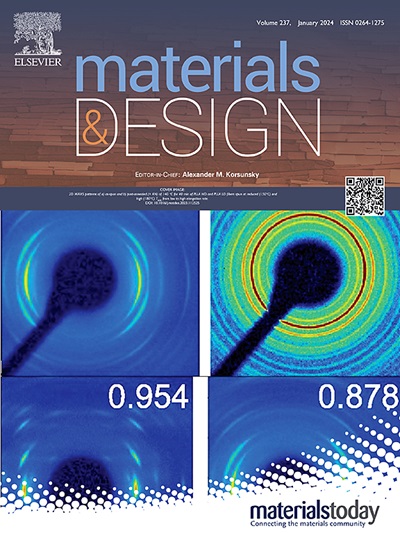Electric pulse improving the plasticity of the HAl66-6-3-2 alloy by promoting the formation of specific oriented texture
IF 7.6
2区 材料科学
Q1 MATERIALS SCIENCE, MULTIDISCIPLINARY
引用次数: 0
Abstract
Electric pulse treatment (EPT) effectively enhances material plasticity but typically compromises strength, and the combined mechanisms of pulsed current on dislocation evolution and grain rotation remain unclear. Here, HAl66-6–3-2 alloy was subjected to EPT, and the results revealed that the EPT sample achieved an increase in plasticity without compromising the strength, with an elongation rate enhancement of 69.89 %. The changes in performance are mainly attributed to three aspects: grain refinement, slight decrease in dislocation density, and the formation of strong {632}<223> texture during the EPT. Unlike the untreated (UT) samples with entangled dislocations, under the coupling effect of Joule heating and non-thermal effect, the dislocations in EPT samples exhibited directionality, primarily composed of a series of parallel dislocation pairs. The formation of the strong {632}<223> texture primarily relied on grain boundary migration and grain rotation, with both Joule heating and non-thermal effect facilitating rapid grain boundary migration. At low-angle grain boundaries, the pulsed current facilitated grain rotation, transforming low-angle grain boundaries in the β phase into high-angle grain boundaries. The study demonstrates EPT can promote the movement of atoms and regulate the microstructure, which is of great significance for the subsequent control of alloy properties.

求助全文
约1分钟内获得全文
求助全文
来源期刊

Materials & Design
Engineering-Mechanical Engineering
CiteScore
14.30
自引率
7.10%
发文量
1028
审稿时长
85 days
期刊介绍:
Materials and Design is a multi-disciplinary journal that publishes original research reports, review articles, and express communications. The journal focuses on studying the structure and properties of inorganic and organic materials, advancements in synthesis, processing, characterization, and testing, the design of materials and engineering systems, and their applications in technology. It aims to bring together various aspects of materials science, engineering, physics, and chemistry.
The journal explores themes ranging from materials to design and aims to reveal the connections between natural and artificial materials, as well as experiment and modeling. Manuscripts submitted to Materials and Design should contain elements of discovery and surprise, as they often contribute new insights into the architecture and function of matter.
 求助内容:
求助内容: 应助结果提醒方式:
应助结果提醒方式:


